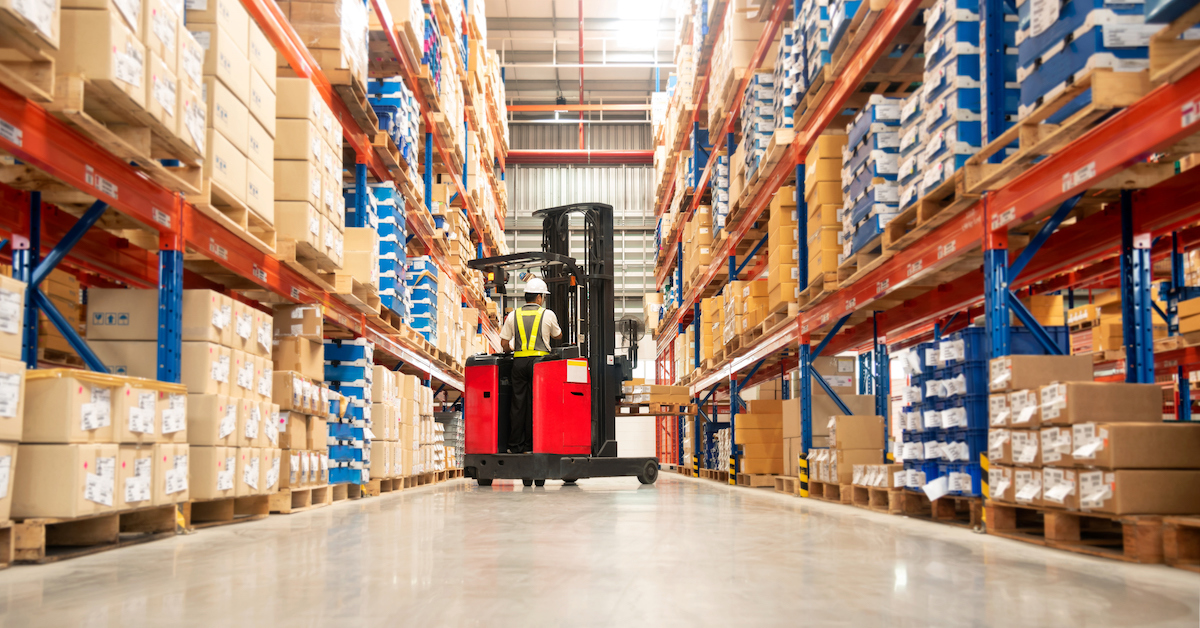Laying the Groundwork: Three Steps to WMS Advancement

It’s challenging to modernize warehouse operations without a comprehensive plan. After all, the path to failure is laid with good intentions, and failing to plan is planning to fail. For the distribution industry—a sector awash with activity and evolution, many companies are forging new paths with the help of technology.
The Path to Warehouse Modernization: Understanding the Changes
For example, Amazon is changing the game and pushing others to do the same. Whether it’s through the use of carousels, robots, or tracking software, these companies’ modernization journeys are helping them to work faster, deliver more affordable products, and operate more efficiently. In turn, advancements by top firms trickle down to midsized players while creating new expectations for customers.
You have technologies in place today but are they the right ones to take you to the next level? It’s an important question—and one that you need to ask. Modernization is all about making the most of what you have and building on it, and many companies find that part of their current technology stack is doing the job, while others are holding them back.
Three Steps to Take on the Way to Distribution Modernization
Following recent articles on the trends, technologies, challenges, and questions to ask on the way to distribution modernization, we would today like to explore the path to advance. From deciding on the foundation to advance to putting in the research, prioritizing investment, and developing a plan, there are a variety of ways to make your distribution modernization journey work.
Evaluate the Foundation for Transformation
Though you may find that some parts of your technology stack are future-proof, it’s likely that the foundation is not. ERP is this foundation, built to allow data to flow in and out of the system, processing information and providing insight for decision makers.
According to the Acumatica guide titled ERP Playbook for the Modern Warehouse, “modernizing warehouse operations is easier when you build on a modern ERP system.” Highlighting the challenges that persist when a distributor relies on basic accounting or legacy systems, the guide notes that without a proper foundation, distributors end up with a patchwork of siloed applications and processes.
Look at Your Current ERP
But how can you tell if your ERP is helping or hurting? This starts with reviewing current features and asking whether they are poised to help you modernize. Connected, modern solutions have become more cost effective and valuable in the last decade. An easier backend has made these products more configurable, and it’s likely that your competitors have made the move to embrace these new solutions.
Ask yourself if your current distribution ERP delivers the following:
Visibility: Companies in distribution have two focuses that drive the way they do business, relationships and costs. Being able to understand how the customer works and how much you are spending on your business is vital, and ERP needs to provide you at-a-glance information on this. Learn more about why visibility matters.
Connection: Your data is only as good as its ability to be accessed. Especially in the past year, not everyone has been able to make it to the office, and they can’t be left in the dark by a system. Anytime, anywhere access matters, and the cloud makes this happen. Here’s how.
Functionality: Selecting an ERP system for your business can be challenging. But the most important thing is to ask if it’s built for today’s and tomorrows business needs. The right functionality is key, and software should enable you to do the job. Here are nine things to look for, and six things to expect from future-proof distribution software.
Decide Whether to Upgrade or Replace ERP
After looking at the current product and the potential improvements, decide whether the next iteration can help or if you should pull the trigger on a replacement. You may be surprised to find that new versions of the software provide features that can help you better manage operations. Conversely, you may not realize that there are better options available for distributors in your industry.
Research and Prioritize
It is critical to research and document inventory and warehouse automation technologies so you can prioritize modernization activities. Understanding what you’re looking for can not only help you shape your decision, it can engage and encourage end users.
Research
Laying the groundwork in advance can help you to save time and avoid unnecessary pitches. From deployment to pricing, it’s important to work with a competent partner to help you understand what’s available and whether functionality is easy and accordable. To make this happen, take the following steps:
Research Existing Capabilities: Document warehouse capabilities available in your current (or potential replacement) ERP system.
Identify Modernization Initiatives: Start small and work on high priority modernization activities first. Review the detailed warehouse assessment to identify gaps. You can then work on filling gaps for future requirements.
Review Potential Technologies: Is your current or potential ERP going to deliver applications that can fill gaps? Will these come at additional cost? How much?
Prioritize
As we discussed in our article on how to document ERP requirements, it’s beneficial to prioritize functionality into need-to-have, nice-to-have, and would like in the future. Luckily, the last of these is one of the key selling points of cloud ERP, as this solution allows you to add functionality as you need it with minimal headaches. Acumatica recommends that companies seeking ERP review the list of gaps and rank each one based on cost and potential benefit.
Plan Your Modernization
With needs and expectations in mind, the next step is to develop a plan that defines the desired goal, supporting technologies, and a timeline and process for conducting the implementation from start to finish. Take the following four steps:
Goals & Desired Outcomes: It is vital to clearly outline the expected results. Document the current state beforehand so you have a benchmark to use as a measure of your success.
Warehouse Automation Technologies: Document which technologies will be used, dependencies, integration points with other systems, known limitations, and provide contacts for assistance.
Timeline: You may not have a start date for the project, but you can develop the detailed phases and timeframes to complete each step in the process.
Contingency Plans: Define contingency plans in case you run into technical issues or other conflicts that prevent the completion of the project.
Make the Most out of Your Journey: Acumatica and Cloud 9 ERP Solutions
Too often, distributors fail to notice they have a problem until it’s too late. This goes for warehouse modernization initiatives as well. ERP is complicated, but thanks to the cloud, implementing a solution is less risky than ever. These products are built to be flexible, future-proof, and easily configured, allowing you to capture more value than ever from an implementation project.
At Cloud 9 ERP Solutions, a Gold Certified Acumatica Partner, we have worked with companies like yours to configure and deliver Acumatica Cloud ERP, a product ready and able to handle your challenges.
Get to know more about how we work, who we’ve helped, and why we’ve been a leader in the business for nearly three decades by contacting us for a free consultation or watch our Acumatica Distribution demo.



